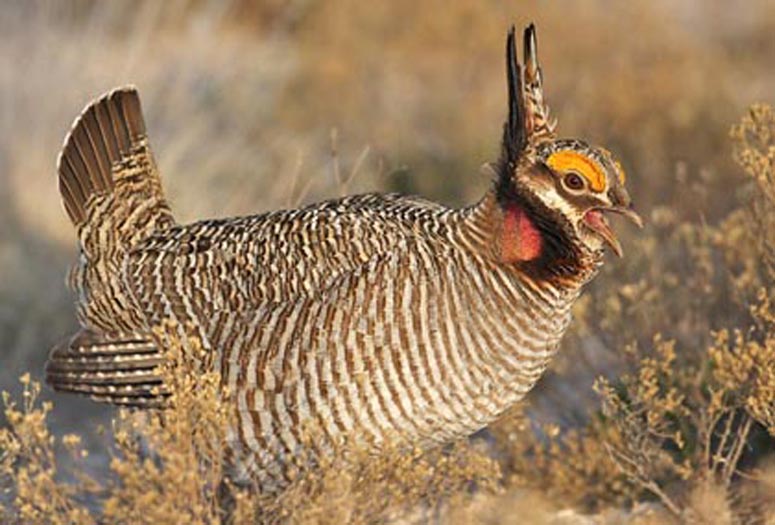
Agricultural News
Distinguishing Differences Between Lesser and Greater Prairie-Chicken
Thu, 28 Feb 2013 14:27:28 CST

They are both medium-sized birds with dark brown to black feathers and feathered feet. The only difference to the untrained eye is one is lesser and one is greater.
Oklahoma State University Cooperative Extension wildlife specialist, Dwayne Elmore, provided some differences between the lesser and greater prairie-chicken.
"The male greater prairie-chickens (GPC) have prominent feathers called pinnae on their neck, a bright yellow eye comb and a gular air sack on the side of their neck that is orange to yellow in color during the breeding season," he said. "The male lesser prairie-chicken (LPC) is very similar, but their gular air sack is red."
Females of both species have less prominent eye combs, shorter pinnae feathers and have barring on the outer tail feathers as opposed to males, which have solid black outer tail feathers.
Historically the ranges for both species are much bigger than current ranges. The GPC occurs primarily throughout the Flint Hills of Kansas and Oklahoma, across most of northern Kansas and in the untilled areas of central Nebraska and South Dakota.
"The GPC has been severely reduced due to loss of grasslands. Most of this loss was due to conversion to row crops and introduced pasture," Elmore said. "Remaining grasslands are being fragmented by tree encroachment, oil and gas development roads and urbanization, communicationtowers and wind power development."
The LPC ranges have changed similarly due to land-use changes.
"To maintain LPC populations it is important to limit fragmentations or conversion of native grasslands and shrub lands," Elmore said. "Native grasses, rather than exotic grasses, should be utilized when converting crop fields back to grassland."
WebReadyTM Powered by WireReady® NSI
Top Agricultural News
More Headlines...




















